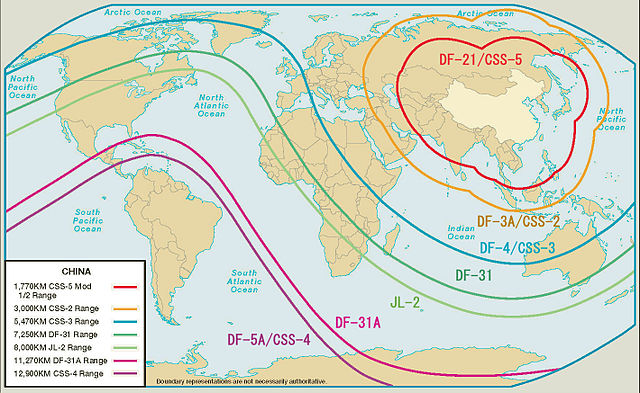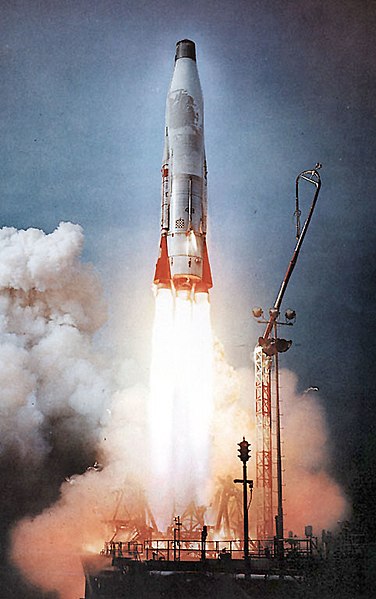The Dong Feng 4 or DF-4 is a first-generation two-stage Chinese intercontinental ballistic missile with liquid fuel. It was thought to be deployed in limited numbers in underground silos beginning in the late 1970s and early 1980s. The Dong Feng 4 has a takeoff thrust of 1,224.00 kN, a takeoff weight of 82000 kg, a diameter of 2.25 m, a length of 28.05 m and a fin span of 2.74 m. The range of the Dong Feng 4, which is equipped with a 2,190 kg nuclear warhead with 3.3 Megaton yield, with a nominal range of 5,500 km. This gives it sufficient range to strike targets as far away as Russia, India, and American bases in the Pacific. The missile uses an inertial guidance system, resulting in a large CEP of 1,500 meters. As of 2017, 10–15 launchers are deployed.
Range of various Chinese missiles (2007); DF-4 range in light blue.
Intercontinental ballistic missile
An intercontinental ballistic missile (ICBM) is a ballistic missile with a range greater than 5,500 kilometres (3,400 mi), primarily designed for nuclear weapons delivery. Conventional, chemical, and biological weapons can also be delivered with varying effectiveness, but have never been deployed on ICBMs. Most modern designs support multiple independently targetable reentry vehicle (MIRVs), allowing a single missile to carry several warheads, each of which can strike a different target. The United States, Russia, China, France, India, the United Kingdom, Israel, and North Korea are the only countries known to have operational ICBMs.
A US Peacekeeper missile launched from a silo
An SM-65 Atlas, the first US ICBM, first launched in 1957
ICBMs can be deployed from transporter erector launchers (TEL), such as the Russian RT-2PM2 Topol-M
Artist's concept of an SS-24 deployed on railway





